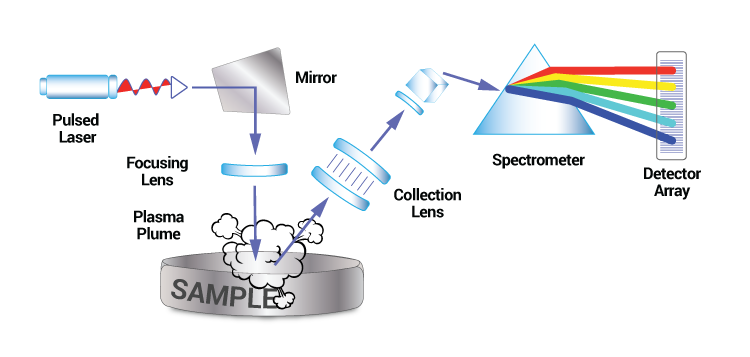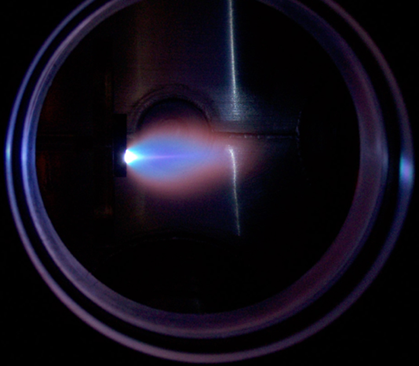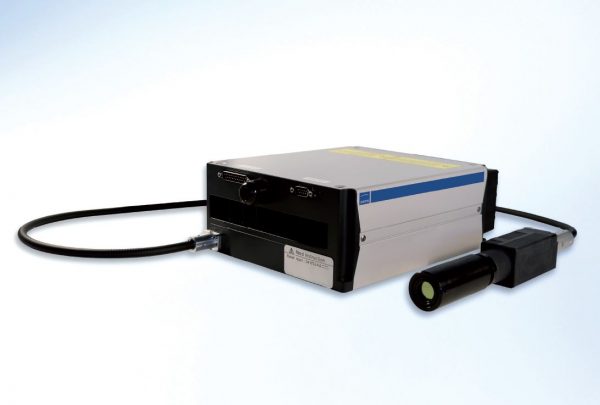
A discussion of the pros and cons of using fiber lasers for metal and metal alloy LIBS applications
Industrial laser induced breakdown spectroscopy typically involves the elemental analysis of various metals. In our previous application note titled “Laser Induced Breakdown Spectroscopy (LIBS) in Biomedical Applications,” we discussed the fundamentals of the technique, emphasizing the use of q-switched diode-pumped solid-state lasers as the excitation source. In this blog post, we are going to explore the possibility of utilizing nanosecond pulsed fiber lasers as the excitation source. We will also discuss the pros and cons of that approach, specifically for the characterization of metals and metal alloys.
What benefits do high-power fiber lasers provide for elemental analysis of metals and alloys?
There has been extensive fiber laser deployment in machining applications like drilling, marking, welding, and engraving over a few decades. Still, the first article evaluating their efficacy as an excitation source for LIBS was not published until 2011. In their work titled “Evaluation of a compact high-power pulsed fiber laser source for laser-induced breakdown spectroscopy,” Gravel Et al. performed an exhaustive comparison of pulsed fiber lasers and q-switched solid-state lasers for LIBS. A full analysis of this work is beyond the scope of this blog post. However, we must highlight some of their initial findings before discussing the current state of fiber laser technology for LIBS.
 In the article, Gravel Et al. concluded that they could utilize their fiber lasers to measure detection limits as low as micrograms per gram (µg/g) for many common metals and alloys. According to the authors, “This work has demonstrated the fiber laser capabilities for elemental analysis of at least aluminum and copper alloys by LIBS, where analytical performances showed to be, in some cases, close to those obtainable with the traditional high energy Nd:YAG laser.” They attributed much of this to the beam quality of the fiber lasers in conjunction with the longer pulse width. These two characteristics resulted in significantly deeper and cleaner ablation craters.
In the article, Gravel Et al. concluded that they could utilize their fiber lasers to measure detection limits as low as micrograms per gram (µg/g) for many common metals and alloys. According to the authors, “This work has demonstrated the fiber laser capabilities for elemental analysis of at least aluminum and copper alloys by LIBS, where analytical performances showed to be, in some cases, close to those obtainable with the traditional high energy Nd:YAG laser.” They attributed much of this to the beam quality of the fiber lasers in conjunction with the longer pulse width. These two characteristics resulted in significantly deeper and cleaner ablation craters.
This result should not be surprising, considering that the original design of these lasers targeted precision machining applications. They also found that the fiber laser’s extremely high pulse repetition rates could allow them to take advantage of the high-speed electronics of a compact spectrometer to further increase the system’s sensitivity. However, it is essential to note that in their analysis, fiber lasers could not live up to the overall pulse energy production, nor with the compactness of microchip lasers.
Advancements in fiber laser technology and elemental analysis

Since that time there have been significant advancements in fiber laser technology industrial laser induced breakdown spectroscopy. These lasers can now detect and analyze metals such as aluminum (Al), lithium (Li), magnesium (Mg), and beryllium (Be). Furthermore, they can now produce pulse energies > 1 mJ and pulse repetition rates up to 200 kHz while maintaining a TEM00 beam profile. A perfect example of this is the JenLas series of nanosecond pulsed fiber lasers from Jenoptik in Germany. Because of its roots in material processing and laser machining, the JenLas design operates well in harsh environments, with a sealed enclosure, protecting against dust and mist. This makes it ideal for integration into instrumentation designed for field applications (e.g., mining or scrapping). This laser is also ideal for process applications such as metallurgy verification and grading at the production facility.
How can we help?
Here at RPMC Lasers, we offer the JenLas series of industrial OEM fiber lasers. This series is available in four different standard configurations ranging from 25W to 100W of average power. These units come standard with an integral isolator to provide enhanced robustness from back-reflections. It also has an on-axis guiding laser to ensure ease of alignment and targeting. Software, hardware, or both can control the JenLas through RS232 and TTL interfaces on the rear on the control box. All of these features make it the ideal OEM laser source for integrating into industrial LIBS instrumentation.
Talk to one of our knowledgeable Product Managers today by emailing us at info@rpmclasers.com or Contact Us with the button below!
Have questions?

 SHIPS TODAY
SHIPS TODAY 